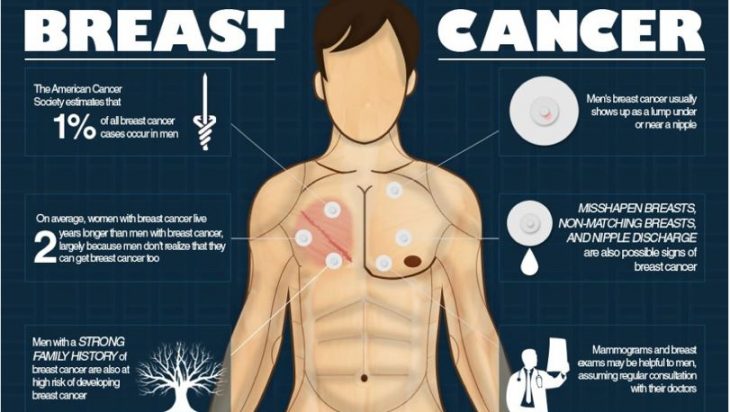
Breast cancer is often perceived as a disease that affects women, but it is crucial to recognize that men can also develop this condition. Although rare, male breast cancer can have serious implications, and awareness is key to early detection and effective treatment.
Can Men Get Breast Cancer?
Yes, men can get breast cancer. Male breasts contain breast tissue, which can develop cancer just like female breast tissue. The misconception that breast cancer is exclusively a female disease can lead to delayed diagnoses in men, which often results in more advanced stages of cancer at the time of detection.
Common Types of Breast Cancer in Men
The most common types of breast cancer found in men include:

- Ductal Carcinoma: This type originates in the milk ducts and is the most prevalent form of breast cancer in men.
- Lobular Carcinoma: Although rarer in men due to fewer lobules, this type starts in the milk-producing glands.
- Inflammatory Breast Cancer: This aggressive form occurs when cancer cells block lymphatic vessels, leading to swelling and redness.
Symptoms of Breast Cancer in Men
Men should be aware of the following symptoms, which may indicate breast cancer:
- A lump or swelling in the breast or underarm area
- Changes in the nipple, such as inversion or discharge
- Skin changes, including redness, scaling, or dimpling
- Swelling or lumps in the breast tissue
If any of these symptoms are noticed, it is essential to consult a healthcare professional promptly.
Risk Factors for Breast Cancer in Men
Several factors can increase the risk of developing breast cancer in men:
- Age: The average age of diagnosis is around 72 years.
- Family History: A significant number of men diagnosed with breast cancer have a family history of the disease.
- Genetic Mutations: Mutations in BRCA1 and BRCA2 can elevate risk.
- Klinefelter Syndrome: This genetic condition increases estrogen levels, raising the risk of breast cancer.
- Obesity: Higher body fat can lead to increased estrogen levels, contributing to risk.
Screening for Breast Cancer in Men
Unlike women, men do not typically undergo routine breast cancer screening. However, men at higher risk should consider regular breast exams and self-examinations starting at age 35. If any abnormalities are detected, further testing such as mammograms or ultrasounds may be recommended.

Treatment Options for Male Breast Cancer
Treatment for breast cancer in men is similar to that for women and may include:
- Surgery: Removal of the tumour or affected breast tissue.
- Chemotherapy: Use of drugs to kill cancer cells.
- Radiation Therapy: Targeted radiation to eliminate cancer cells.
- Hormone Therapy: Blocking hormones that fuel cancer growth.
- Targeted Therapy: Drugs that specifically target cancer cells without harming normal cells.
Conclusion
Understanding breast cancer in men is vital for early detection and treatment. Awareness of symptoms, risk factors, and the importance of screening can significantly impact outcomes. If you notice any changes in your breast tissue or have concerns about your risk, do not hesitate to consult a healthcare provider.
Read more on Lifetips.blog













